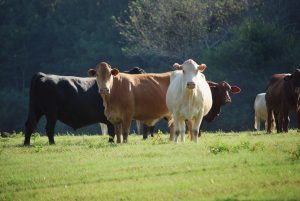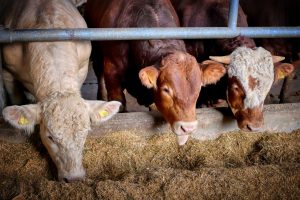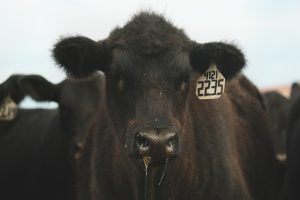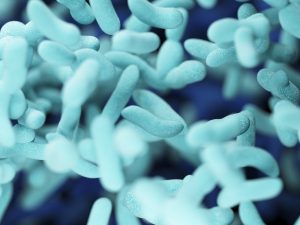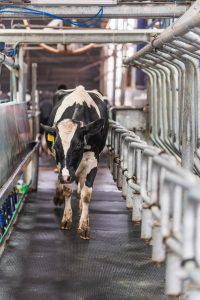Álvaro García
When looking into sustainable livestock production, adapting cattle genetics to the environment offers an integrated approach to balancing animal performance, resource efficiency, and market demands. This philosophy promotes breeding and selecting animals suited to local climates, feed resources, and market opportunities, rather than reshaping the environment or supply chains to fit genetically specialized cattle. Such an approach ensures sustainability by harmonizing productivity with ecological and economic realities.
Matching cattle genetics to environmental conditions
The first step in sustainable cattle production is to ensure the animals are biologically suited to their surroundings. Cattle adapted to local environments thrive with minimal external inputs and stress, reducing the need for interventions such as climate control systems, specialized feeds, or disease treatments.
For example, tropical regions benefit from hardy breeds like Bos indicus (e.g., Brahman), which are naturally resistant to heat stress, parasites, and diseases common in humid climates. In temperate regions, Bos taurus breeds (e.g., Angus or Holstein) are often better suited due to their higher productivity in cooler environments. Crossbreeding these two genetic groups has also proven successful in creating cattle that combine heat tolerance with higher milk or meat production.
Animals adapted to their environment are better able to utilize available feed resources, such as native grasses, crop residues, or agricultural byproducts, which reduces the need for costly imported feeds. Additionally, they are less prone to physiological stress, which can otherwise lead to diminished performance, health issues, and increased greenhouse gas emissions per unit of product.
Considering feed resource availability
Adapting cattle genetics to the environment must include the availability and economic viability of feedstuffs. Animals suited to do well on local forages and byproducts significantly lower production costs and environmental impact. For example, in arid or semi-arid areas, cattle that efficiently utilize low-quality, high-fiber forages like native grasses or crop residues outperform high-performance breeds dependent on energy-rich concentrates like corn and soybean meal.
Local feed markets also influence this equation. If high-quality concentrate feeds are either unavailable or too costly, selecting cattle with lower nutritional demands becomes critical. For example, smallholder farmers often choose dual-purpose breeds that can thrive on roughage and provide both milk and meat, minimizing the need for external inputs. Additionally, cattle capable of digesting agricultural byproducts such as distillers’ grains or molasses create a circular economy by converting waste into high-value products.
In addition to environmental and feed considerations, adapting cattle genetics to the environment involves aligning production systems with local and global market demands. This ensures the economic viability of cattle operations while supporting sustainable practices.
In regions where consumer preferences lean toward grass-fed beef, hardy breeds like Hereford or indigenous cattle that efficiently convert forage into high-quality carcasses are better choices than grain-fed beef breeds. Similarly, in the dairy sector, cattle with moderate production levels but high-fat content (e.g., Jersey cows or crossbreeds) may meet local demand for higher-value dairy products like butter or cheese.
For export-driven markets, genetic traits that enhance product quality (e.g., marbling in beef or protein content in milk) can increase competitiveness. However, exporting regions must also balance these demands with the costs and environmental consequences of maintaining high-performance animals.
Minimizing environmental modifications
Modifying the environment to fit certain cattle genetics often leads to unsustainable practices. For instance, high-producing breeds like Holstein-Friesians, while efficient in optimal conditions, often require intensive cooling systems, energy-rich diets, and veterinary care in tropical climates. These adaptations increase resource use and environmental degradation, such as higher water consumption, deforestation for feed crops, and greenhouse gas emissions from energy-intensive farming practices.
In contrast, animals genetically suited to the local climate and resources naturally reduce the need for such interventions. Breeding programs that emphasize traits like heat tolerance, disease resistance, and efficient forage utilization not only reduce production costs but also enhance resilience to environmental stressors, such as droughts or disease outbreaks.
Sustainability also depends on the interaction between genetics, environment, and market forces. The likelihood of selling products and accessing affordable feed plays a vital role in determining which genetic traits to prioritize. Locally adapted animals, while potentially lower in productivity, often provide greater stability in fluctuating markets.
For example, cattle that can graze on native pastures with minimal inputs reduce dependence on global feed markets, which are often subject to price volatility and trade disruptions. In turn, producing high-quality beef or milk from locally adapted cattle can cater to niche markets, such as sustainably raised or grass-fed products, commanding premium prices and meeting consumer demand for environmentally conscious farming.
Looking into the future
Adapting cattle genetics to the environment is not just a biological or ecological strategy, it is an economic and social necessity. By selecting cattle breeds that thrive under local conditions and align with market demands, producers can reduce costs, minimize environmental impact, and ensure profitability. Advances in genomics and precision breeding provide tools to further enhance cattle performance in specific environments without compromising sustainability.
This approach shifts the focus from maximizing productivity at all costs to creating resilient, efficient systems that balance the needs of farmers, consumers, and the planet. When cattle genetics, feed resources, and market opportunities align with environmental realities, livestock production becomes a truly sustainable and profitable enterprise.
© 2025 Dellait Knowledge Center. All Rights Reserved.



